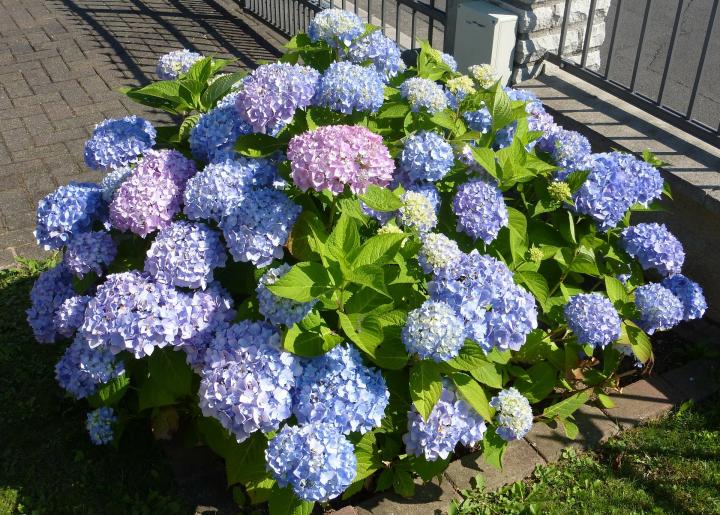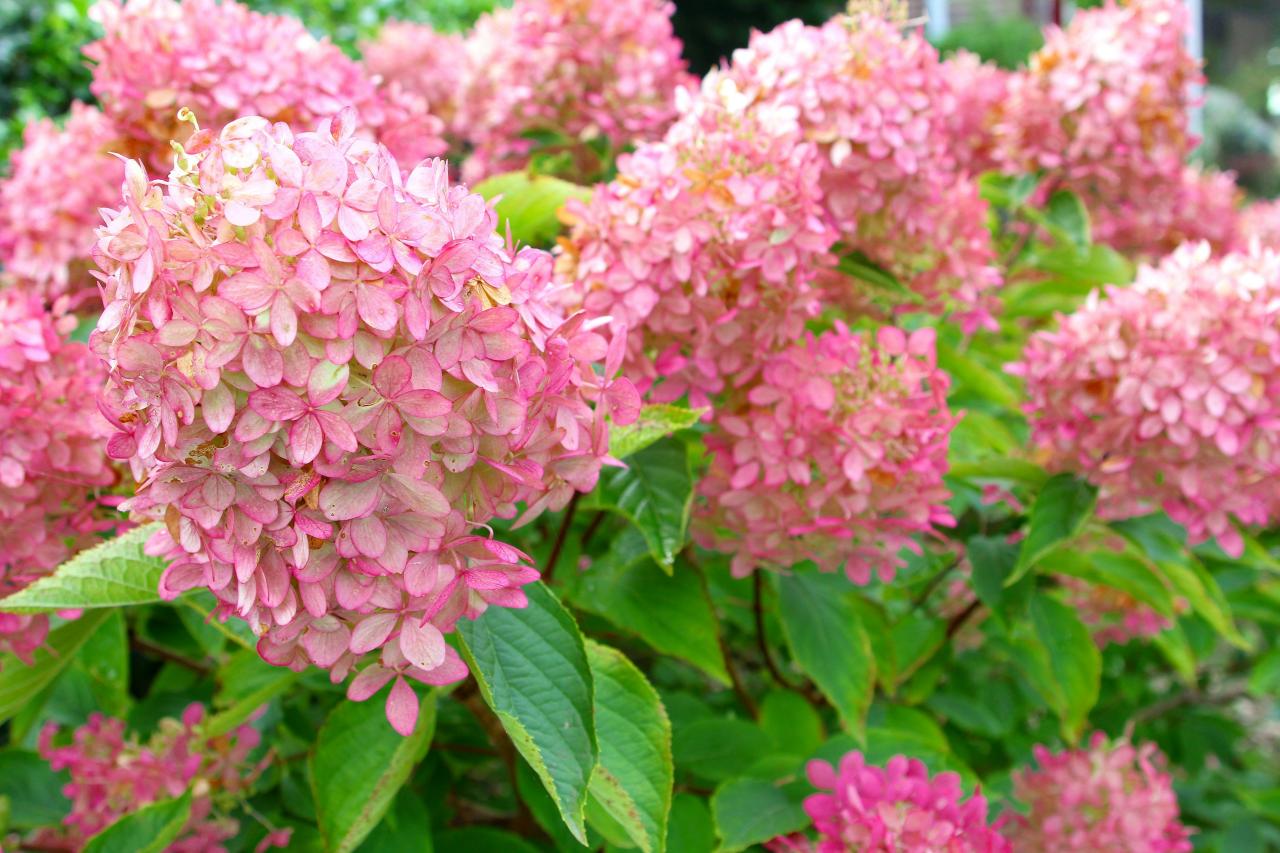Understanding Hydrangea Varieties and Their Lighting Needs
When it comes to hydrangea care, understanding the different types of hydrangeas and their unique lighting requirements is crucial. Bigleaf hydrangeas, for instance, thrive in partial shade, especially in warmer climates, while Panicle hydrangeas can tolerate full sun to partial shade. Oakleaf hydrangeas, on the other hand, prefer partial shade to full shade, especially in regions with intense sunlight.
Some hydrangeas, like Panicle and Climbing hydrangeas, are more tolerant of full sun and can thrive in areas that receive direct sunlight for six hours or more. However, others, like Bigleaf and Oakleaf hydrangeas, require more shade and may suffer from scorching or leaf burn if exposed to too much direct sunlight.
Providing the right amount of sunlight is essential for optimal hydrangea care. By understanding the specific lighting needs of your hydrangea variety, you can create a tailored care plan that meets its unique requirements. This, in turn, can lead to healthier foliage, more vibrant blooms, and a thriving hydrangea plant. Remember, when it comes to hydrangea care sun or shade, it’s all about finding the perfect balance for your specific plant.
How to Determine the Ideal Sun-Shade Ratio for Your Hydrangea
Assessing the amount of sunlight your garden receives is crucial for determining the ideal sun-shade ratio for your hydrangea. To do this, observe your garden at different times of day, noting the areas that receive direct sunlight and those that are shaded. Consider the direction your garden faces, as south-facing gardens typically receive more sunlight than north-facing ones.
Climate, soil type, and surrounding vegetation also play a significant role in determining the ideal sun-shade ratio for your hydrangea. In hot and dry climates, for example, hydrangeas may require more shade to prevent scorching, while in cool and wet climates, they may thrive in full sun. Soil type can also impact the amount of sunlight your hydrangea can tolerate, with plants in well-draining soil able to handle more direct sunlight than those in heavy, clay-based soils.
When determining the ideal sun-shade ratio for your hydrangea, consider the specific needs of your plant. Bigleaf hydrangeas, for instance, prefer partial shade, while Panicle hydrangeas can tolerate full sun to partial shade. By understanding the unique requirements of your hydrangea variety and assessing the conditions in your garden, you can create a tailored care plan that meets its needs and ensures optimal growth and blooming. Remember, finding the perfect balance of sun and shade is key to successful hydrangea care sun or shade.
The Benefits of Morning Sun and Afternoon Shade for Hydrangeas
Providing morning sun and afternoon shade is an ideal way to care for hydrangeas, as it offers a range of benefits for these beautiful plants. By receiving direct sunlight in the morning, hydrangeas can absorb the energy they need to produce vibrant blooms and healthy foliage. Meanwhile, the afternoon shade helps to protect the plant from intense heat and scorching, which can be particularly damaging in warm climates.
One of the primary benefits of morning sun and afternoon shade is improved blooming. Hydrangeas that receive this type of light exposure tend to produce more abundant and longer-lasting flowers, which can add color and beauty to any garden. Additionally, the morning sun helps to promote healthy foliage, as it allows the plant to undergo photosynthesis and produce the energy it needs to thrive.
Another significant advantage of morning sun and afternoon shade is the reduced risk of scorching. When hydrangeas are exposed to intense sunlight for extended periods, their leaves and flowers can become scorched and damaged. By providing shade in the afternoon, gardeners can help to prevent this type of damage and ensure their hydrangeas remain healthy and vibrant. By finding the perfect balance of sun and shade, gardeners can enjoy optimal hydrangea care sun or shade and reap the rewards of these stunning plants.
Creating a Hydrangea-Friendly Microclimate with Shade-Providing Plants
Creating a hydrangea-friendly microclimate is essential for providing the ideal sun-shade balance for these beautiful plants. One effective way to achieve this is by planting shade-providing plants, such as trees or shrubs, nearby. By doing so, gardeners can regulate the amount of sunlight their hydrangea receives, creating a more favorable environment for growth and blooming.
Suitable companion plants for hydrangeas include trees like oak, maple, or pine, which can provide dappled shade and create a sense of tranquility in the garden. Shrubs like rhododendron, azalea, or boxwood can also be used to create a hydrangea-friendly microclimate, as they can provide a layer of shade and help to block intense sunlight.
When selecting companion plants, it’s essential to consider factors like mature size, growth rate, and light requirements. By choosing plants that complement the needs of your hydrangea, you can create a harmonious and thriving garden ecosystem. Additionally, incorporating a mix of plants with different textures, colors, and forms can add visual interest and create a stunning display in your garden.
By creating a hydrangea-friendly microclimate with shade-providing plants, gardeners can enjoy optimal hydrangea care sun or shade and reap the rewards of these stunning plants. With careful planning and attention to detail, it’s possible to create a beautiful and thriving garden that showcases the beauty of hydrangeas.
The Impact of Sunlight on Hydrangea Bloom Color and Size
The amount of sunlight a hydrangea receives can have a significant impact on the color and size of its blooms. Different levels of sunlight can affect the intensity and duration of blooming, as well as the overall size and shape of the flowers. For example, hydrangeas that receive full sun tend to produce more vibrant and intense blooms, while those in partial shade may produce softer, more delicate colors.
In terms of bloom size, hydrangeas that receive more sunlight tend to produce larger flowers, while those in shadier conditions may produce smaller blooms. This is because sunlight provides the energy needed for hydrangeas to produce the sugars that fuel flower growth and development. By providing the right amount of sunlight, gardeners can encourage their hydrangeas to produce bigger, more beautiful blooms.
It’s also worth noting that the timing of sunlight exposure can impact bloom color and size. For example, morning sun can help to promote more intense bloom colors, while afternoon shade can help to prevent scorching and promote healthier foliage. By understanding the impact of sunlight on hydrangea bloom color and size, gardeners can optimize their hydrangea care sun or shade to achieve the best possible results.
By finding the perfect balance of sun and shade, gardeners can enjoy optimal hydrangea care sun or shade and reap the rewards of these stunning plants. With careful attention to lighting needs, gardeners can encourage their hydrangeas to produce beautiful, vibrant blooms that add color and beauty to any garden.
Common Mistakes to Avoid When Planting Hydrangeas in Sun or Shade
When it comes to hydrangea care sun or shade, there are several common mistakes that gardeners can make that can negatively impact the health and success of their plants. By being aware of these mistakes, gardeners can take steps to avoid them and provide their hydrangeas with the best possible care.
One common mistake is inadequate soil preparation. Hydrangeas require well-draining soil that is rich in organic matter, so failing to prepare the soil properly can lead to poor growth and blooming. Gardeners should take the time to test their soil and amend it as necessary to ensure it is suitable for their hydrangea.
Insufficient watering is another mistake that can harm hydrangeas. Hydrangeas need consistent moisture, especially when they are producing flowers. Gardeners should water their hydrangeas regularly, but avoid overwatering, which can lead to root rot and other problems.
Failure to provide necessary support is also a common mistake. Some hydrangea varieties can grow quite tall and may need staking or other support to prevent them from toppling over in the wind. Gardeners should provide support as needed to keep their hydrangeas upright and secure.
Finally, gardeners should avoid planting hydrangeas in areas with standing water or where water tends to collect. Hydrangeas are susceptible to root rot and other problems when their roots are consistently waterlogged. By avoiding these common mistakes, gardeners can provide their hydrangeas with the best possible care and enjoy optimal hydrangea care sun or shade.
Hydrangea Care Tips for Specific Regions and Climates
When it comes to hydrangea care sun or shade, it’s essential to consider the specific region and climate in which you’re growing your hydrangea. Different regions and climates present unique challenges and opportunities for hydrangea care, and adapting to these conditions is crucial for optimal growth and blooming.
In hot and dry climates, such as those found in the southwestern United States, hydrangeas require extra attention to ensure they receive sufficient moisture. Gardeners in these regions should water their hydrangeas regularly, but avoid overwatering, which can lead to root rot and other problems. Providing afternoon shade can also help to reduce stress and promote healthy growth.
In cool and wet climates, such as those found in the Pacific Northwest, hydrangeas may require less moisture and more protection from excessive rain. Gardeners in these regions should ensure good drainage and avoid planting their hydrangeas in low-lying areas where water may collect. Providing morning sun and afternoon shade can also help to promote healthy growth and blooming.
In regions with extreme temperature fluctuations, such as those found in the Midwest, hydrangeas may require extra protection from cold temperatures and heat stress. Gardeners in these regions should mulch around the base of their hydrangeas to retain moisture and regulate soil temperature. Providing a windbreak or other protection from harsh winds can also help to promote healthy growth and blooming.
By adapting hydrangea care to specific regional and climatic conditions, gardeners can provide their hydrangeas with the best possible care and enjoy optimal hydrangea care sun or shade. Whether you’re growing hydrangeas in a hot and dry climate or a cool and wet climate, understanding the unique challenges and opportunities of your region can help you to create a thriving and beautiful hydrangea garden.
Monitoring and Adjusting Your Hydrangea’s Sun-Shade Balance
To ensure the long-term health and success of your hydrangea, it’s essential to monitor its response to its sun-shade environment and make adjustments as needed. This ongoing observation and adaptation are critical components of effective hydrangea care sun or shade.
One key aspect of monitoring your hydrangea’s sun-shade balance is observing its foliage and blooms. If your hydrangea is receiving too much direct sunlight, its leaves may become scorched or wilted, while too little sunlight can lead to weak and spindly growth. By paying attention to these signs, you can adjust the amount of sunlight your hydrangea receives to achieve the perfect balance.
Another important factor to consider is the time of day when your hydrangea receives sunlight. As discussed earlier, morning sun and afternoon shade can be an ideal combination for many hydrangea varieties. By observing when your hydrangea receives direct sunlight and adjusting its placement or providing shade as needed, you can create a more hydrangea-friendly microclimate.
In addition to observing your hydrangea’s response to its sun-shade environment, it’s also essential to adapt to changing conditions over time. As your hydrangea grows and matures, its lighting needs may change, and it may require more or less sunlight to thrive. By staying attuned to these changes and making adjustments as needed, you can ensure your hydrangea continues to thrive in its sun-shade environment.
By monitoring and adjusting your hydrangea’s sun-shade balance, you can provide your plant with the ideal conditions for optimal growth and blooming. With attention to detail and a willingness to adapt to changing conditions, you can enjoy a thriving and beautiful hydrangea garden that brings joy and beauty to your outdoor space.






